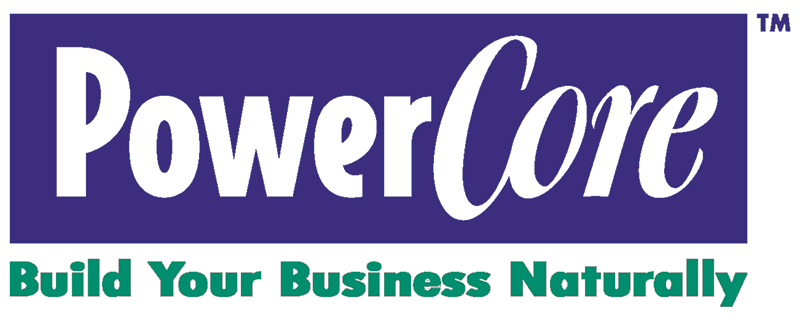What To Do To Get Referrals: Leadership | Reports
Each month, our Team creates seven different data sets through reports. The Officers share results.
What reports do you track in your business?
How do you share the information you collect?
Now pick one report:
How does your client benefit because you have this information?
Response from Karen Williams
from the Virginia Highland Team
We track client case information. That information is shared with eveyone in the office internally as well as with the client. We are able to determine the status of their case easily and answer questions quickly despite the numerous documents that are involved in each case. Easy access means that if one team member is out, another can get to the information in an efficient manner. The client benefit is that they are quickly informed, questions are quicly answered gving the client peace of mind regarding the status and the requirements necessary to complete their case.

Response from Wendy Kinney
from the PowerCore Team
We track attendance - because each Member's classification is protected, and if they aren't participating it's a cost to the Team.
We track the items on Referral Records - this shows initiative. For each Member who isn't taking the initiative to give value, the math quickly goes to no value.
We track bank deposits on We Did Business Slips - this is proof of value.
The Coaches complete a monthly meeting review - this is a snapshot of the Team, from a non-Member's perspective.
One Member completes the monthly Team Score Card - this is a movie, from an inside perspective.
When a new Member joins we track effort through the mentoring program. Referrals don't happen because someone bought a seat, referrals happen because a Member is SAYing and DOing and GIVing - to get referrals.
_____
On a Member's badge you can see their participation in leadership - silver stars, hand and double hand pins; OE panelist, Coach, and Angel Officer pins.
Look for Gold Stars, MVP, and Shooting Star pins - this indicate the number of people this Member has invited, who joined. (5, 15, and 25.)
Year pins show the credibility of consistency.
Ask them about other pins.
This things show up on their personal profile page along with the extra learning opportunities they've taken, the Endorsement Letters they've given and received, and the recognition they've created through news.

Response from James Paisley
from the Virginia Highland Team
Pipeline Reoprt/spreadsheet. Every single active case I have is put on my pipeline report. It has value projections for recovery for a client, and the time that's projected to take to resolve that case. I adjust this report every 2 weeks. This benefits me for forecasting and staying on top of cases. It benefits clients because it ensures their case is always top of mind for me and nothing slips through the cracks. Since tracking this report our average case closes 2 months sooner (30% faster), and the recovery value for each case has increased 19%.

Response from Scott Levine
from the Virginia Highland Team
I use many different reports to track various KPI (key performance indicators). The most important would be my receivables report. This shows which clients have not paid their invoices yet. I do not share this information with my clients since it is soley for the benefit of my business.
This report is then used to collect funds from clients who have not paid yet. Other clients benefit from this because if invoices go unpaid for long enough, this would lead to higher prices overall.

Response from Rodney Shaffer NMLS #1121946
from the Virginia Highland Team
The most important report we use is a weekly status report. The mortgage process is very time sensitive - we have a contract closing date to meet and we have finance and appraisal contingency dates we must meet to protect our clients' earnest money. Our borrowers and both Realtors want to know what progress we are making toward these deadlines. Therefore, every Friday between contract binding date and closing, we email a status report showing our progress and current status towards completing the underwriting, appraisal, and title requirements for closing. Our clients benefit because they have current information on our status and progress. And the Realtors benefit because they also know where we are in the process, with one quick weekly email report. They don't have to take extra time to inquire about the status because we proactively update them.

Response from Tom Wallace
from the Peachtree City Team
I track the debts my clients pay off. It's very motivating to see that number go up and their total debt remaining go down. It also give incentive to stay with the process and even to find ways to accelerate their progress.

Response from Jack Moore
from the Virginia Highland Team
I have a one person business but I still make reports. I have one metric with the name of the client and the expected revenue, and another showing actual money received. The goal is to move a case from column one to column two. This keeps me on track and helps avoid having something getting stuck on the back burner. It makes me prioritize. It helps the client because they came to me to get their stuff done.

Response from Shaundra Stapleton, AAMS™ CDFA®
Performance reports of a client account and portfolio can be shared with clients monthly, quarterly and annually. This information is utilized in the larger financial planning discussions as well as annual client reviews.

Response from Tyler King
The largest and most effective report that I utilize in my industry is weather reports. Hail reports and high wind reports show me what areas have been largely effected.
This allows me to communicate with insurance companies and showcase that a storm date actually happened at the homeowners location.

Response from Steven Stafford
from the Virginia Highland Team
We track pretty much everything. Leads, sales calls, sales, customer contacts, policies, households, billing, policy reviews, new business, renwals, new opportunities...etc...
A majority of the information tracked information is available and visible to our sales and service employees through CRM nad various data bases.
In the insurance business it is important for us to have as much information available to know our client's needs and to provide the best service and coverage based on each individual and circummstance.

Response from Lynn Chen
from the Buckhead Team
Law firms are vendors of professional services, not widgets, plus every case is different, so it is challenging to (a) determine what factors or variables to track, and (b) figure out how the tracked information is relevant to each client. I do not create a compiled "report" in my business, but there are a few things that I do take note of: (1) the internal processing time in my firm ("How long did it take for us to deliver the work product?"), (2) external processing time by courts and local governments ("How long has it taken for the court to schedule a hearing/issue a notice?" "How long has it taken for city staff to respond to my question?"), and (3) general trends in the industry ("What's the average rent escalation rate for offices in the past few months?"). When clients come to me, I like to provide an estimate of how long completing tasks will take, because this helps my clients create their own actionable plans and get their life back. Paying attention to the general trends of the commercial real estate industry also allows me to counsel my clients better to maximize their profit in deals.

Response from Trey Newton
from the Virginia Highland Team
I dont do a great job of tracking statistics but when you only sale a few homes a year its not to hard to remember. I am usually working with 10 or so clients in various stages of "house hunting" at a time so I will keep a page in my agenda with their hopes, dreams, finances and more importantly, things they do not like.
Dotloop, our contract software, keeps all my client information and old contracts so that i can pull them and review contract terms and personal details. I am always referring back to special stipulations that i have used in the past to address specific situations like low appraisals, leins, bonds or property issues. This is probably the best way I use previous data on current deals.

Response from Tommy Stapleton
from the Virginia Highland Team
In my industry, a census report showing relevant data (name, DOB, gender, medications, etc) is provided to the carrier and is used in the designing of the group benefits package (medical, dental, vision, short term disability, long term disability and retirement accounts) for a all small & medium size businesses.

Response from Heidi Franz
from the Newnan Team
In my business, I track several key reports: balance sheets, profit and loss statements, accounts receivable aging reports, and cash flow statements. These reports provide a full picture of a client’s financial health. Once prepared, I share these reports directly with my clients, ensuring they’re not just accurate but also easy to understand, so my clients can use them to make informed decisions.
One report I rely on heavily is the cash flow statement. By breaking down cash inflows and outflows, I help clients understand if their business has enough liquidity to meet obligations and plan for growth. Recently, a client was considering expanding their operations but wasn’t sure if their cash flow could support it. With a detailed cash flow analysis, I showed them where adjustments could free up capital, giving them confidence to move forward without jeopardizing their finances.

Response from David Vo
In my business, I track several critical reports to ensure both operational efficiency and exceptional client service. These include client relationship reports to monitor engagement and communication touchpoints, portfolio performance reports to track investment success relative to client goals, and revenue and pipeline reports to evaluate the health of our business growth. Additionally, compliance and regulatory reports keep us aligned with industry standards, and marketing analytics reports help us understand the effectiveness of our outreach efforts.
The information we collect is shared both internally and externally in strategic ways. Internally, our team utilizes dashboards and tools like CRM platforms to stay aligned on client needs and performance metrics, complemented by regular team meetings to assess progress. For our clients, we prioritize transparency by providing quarterly portfolio reviews and financial plan updates, delivered through digital portals, in-person meetings, and educational webinars.
For example, our portfolio performance reports directly benefit clients by offering them clarity and confidence in their financial journey. These reports provide insights into how their investments are performing, helping to reduce anxiety and reinforce trust. They also enable proactive adjustments, such as reallocating underperforming assets, ensuring clients stay aligned with their goals. Moreover, these reports empower tailored advice, allowing us to offer personalized strategies that reflect the unique financial situations of our clients. Ultimately, this demonstrates our dedication to their success and solidifies our role as trusted advisors.
By sharing these insights with our clients and team, we create a collaborative and informed environment, reinforcing the value we bring to their financial planning experience.

Response from Steven Hamilton
from the Virginia Highland Team
In my industry, we run renewal reports constantly. Renewals are a big deal in insurance. Imagine I save you money one year, earn your business, then the next year your renewal shoots up 50%; you'd be livid. Renewal reports allow me to track the rate increases or decreases for clients. When I see a large increase, it allows me to shop their insurance for them so that I may present better numbers. On the other hand, I can inform them "Ms. So-and-so, good news; your rates have decreased 10% from last year to this year with X Company". This reassures my clients that I'm watching out for them and monitoring their coverage at all times.

Response from Drew Harrison
from the East Cobb Team
I track details about my clients specific health needs. While it may seem like excess information, knowing who needs what, for insurance purposes at any given time when interacting with my clients? That's just a win-win. They are very happy I remember the details, and it saves us both time by being efficient.
Even for those I don't end up having as my clients, I still try and keep track of this information. Why? Because when 4 months later, I have a couple reach out to me now that the timing is right for them, and I am able to pick up where we left off as if no time had passed. That is value. Value that I can tangibly add to others.
